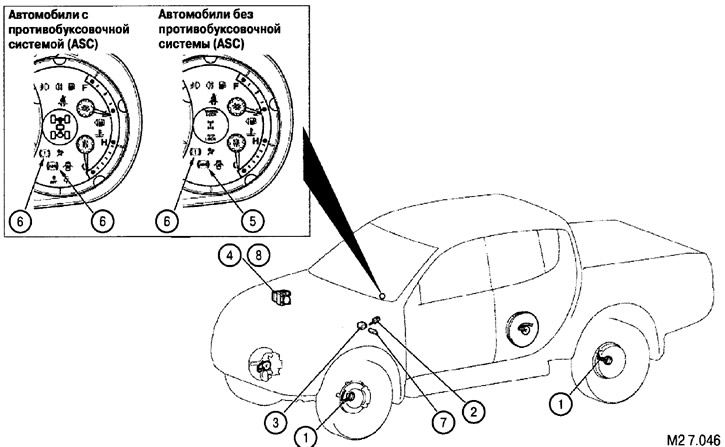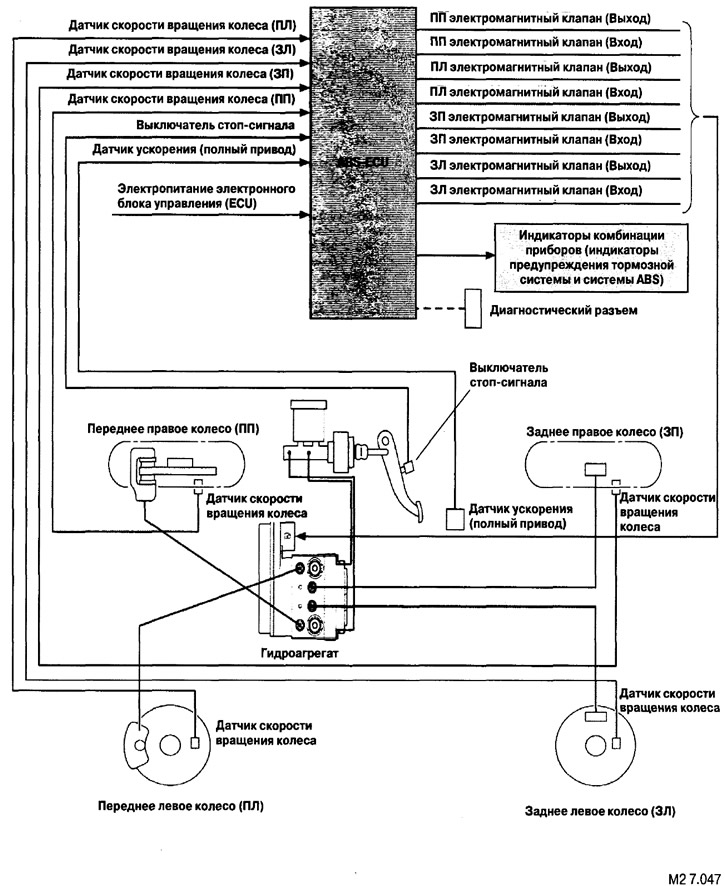The EBD system, guided by data on the rate of deceleration of the car and on the slippage of the wheels, controls the solenoid valves, increasing or decreasing the pressure of the TJ in the rear brakes. In this way, EBD improves both the vehicle's braking power and its handling and stability. Also, thanks to EBO, the driver does not need to depress the brake pedal harder in a more loaded car or when driving on slippery surfaces.
Thanks to the optimal distribution of braking forces between the axles, the load on the front brakes is reduced, which increases the life of the brake pads and discs.
Specifications
| Position | Specification |
| ABS control method | 4 sensors |
| The number of teeth of the front and rear ABS sensor rotors | 47 |
| Wheel speed sensor type | electromagnetic |
| Gap between sensor and front wheel rotor (unregulated) | 0.25-1.40mm |
| Gap between sensor and rear wheel rotor (unregulated) | 0.18-0.92mm |
ABS controls

Control elements of the ABS system shown in fig. M2 7.046
| № | the name of detail | Function Description |
| Sensors | ||
| 1 | Wheel speed sensors | Determines the rotation speed of each wheel |
| 2 | Stoplight switch | When the brake pedal is pressed, it turns on the brake light |
| 3 | Acceleration sensor (four-wheel drive) | Determines the acceleration in the direction the vehicle is moving |
| Executive devices | ||
| 4 | Electronic hydraulic unit | Operates solenoid valves |
| 5 | ABS system malfunction warning light | Turns on in case of a malfunction in the system |
| 6 | Brake system malfunction warning light | Turns on in case of a malfunction in the system |
| 7 | Diagnostic connector | Used to connect diagnostic devices |
| 8 | Electronic control unit for anti-lock braking system (ABS-ECU) | Processes data from sensors and controls actuators. Performs self-diagnosis |
Block diagram of the ABS system

